Should I feed my Venus Flytrap live or dead foods?
While it is nice to have an exotic plant like the Venus flytrap, it is also important to know how to care for and feed this carnivorous plant. Prematurely buying this tropic plant before knowing about its feeding habits will lead to its premature demise. So if you are considering buying a Venus flytrap or have just bought this plant, here are few things about its unique feeding habits that you should know.
- Just like any other plant, the Venus flytrap requires its share of the sun, regular pruning, and water.
- The Venus flytrap can be fed both live and dead insects; the plant is not very picky
- The Venus flytrap can survive for many weeks or even months without consuming any prey. However, persistent lack of food usually leads to stunted growth and fading of its colors.
- Providing very large prey can make it difficult for the leaves to close and this can result in the loss or withering of the leaf
- If you do not like to handle bugs (alive or dead) with your fingers, invest in a pair of tweezers or use chopsticks.
General Care:
- The Venus flytrap requires at least 4-6 hours of direct sunlight every day to thrive.
- Plain water is adequate. Feel the soil with your finger and if it feels dry add water. Do not overwater as it will weaken the roots. This is a tropical plant that is used to wet soil- so you should water it every 2-4 days.
- The soil should be nutrient-poor (eg use sphagnum or peat moss)
- The pot should have good drainage to prevent water from collecting
What type of prey does the Venus flytrap eat in nature?
In nature, the Venus flytrap eats a wide range of prey that includes insects like baby grasshoppers, flies, beetles, caterpillars, slugs, baby crickets, ants, small spiders, bees, pill bugs, worms, etc. However, the majority of its prey are creatures that crawl on the plant and eventually get trapped in between the leaves. Insects that fly make up a small percentage of its meals. Many small creatures (especially worms) can wriggle out of the trap spaces and therefore not every prey becomes a meal.
Feeding the Venus Flytrap
- In general, the Venus flytrap should be fed once every 2-3 weeks. This means providing just one ‘trap’ of the plant with the prey and this will provide enough nutrition for the entire plant for the several weeks
- Avoid feeding more frequently or feeding every trap; in nature, the Venus flytrap only feeds itself once every 2-3 weeks.
- Size of the meal. In general, the size of the meal you select for the Venus fly trap should be less than 1/3rd the size of the trap in length. If the insect is very long, the trap may not close, and/or the meal will sit for a prolonged time, leading to rot and loss of the leaf.
- If the prey is too big, cut it into a few pieces and add water to hydrate before feeding
- During the dormancy period (late fall and winter), there is no need to feed the venus fly trap.
Should I use live or dead prey to feed the Venus flytrap?
You can feed the Venus flytrap both dead and live insects. In nature, the Venus flytrap usually consumes live prey. However, if you decide to give it dead prey, at the same time you need to gently trigger the hairs with a toothpick so that the trap will close. You may need to trigger the hairs several times or in different locations to initiate closure. On occasion, if the hair-trigger does not work, you will gently have to push the center of the trap with a tweezer to start the motion. If you do not trigger the hairs, the trap will not close and the prey will be rejected. Live insects wriggle around and trigger the hair, leading to the closure of the trap.
How to feed live insects?
Feeding live insects to the Venus flytrap is tricky. In most cases, the insect will fly away. To avoid this, place the insect in a small container and place it in the fridge or freezer for several minutes- the cold temperature will stun the insect making it lethargic. Then with a tweezer place the insect in the trap; at the same time, you may need to trigger the hair for trap closure. Unfortunately, most people do not like to feed live insects for several reasons:
- They are squeamish about holding them
- Live insects are sometimes difficult to purchase.
- Even collecting live insects around the home is not easy
- Plus when you purchase a few insects at a time, some may die in captivity. So it is not realistic to be running off to the pet store every 2-4 weeks in search of live insects.
What type of dead prey can I feed the Venus flytrap?
- While you can feed the Venus flytrap any small dead prey, the International Carnivorous Plant Society recommends rehydrated bloodworms, which you may be able to buy from select pet stores.
- If you are going to be using dead prey (e.g. crickets, mealworms, bloodworms), then you need to rehydrate them with a few drops of water for 30-45 minutes before feeding. These prey/worms are readily available and cost less than $10 for a large container.
Monitor
To ensure that you have fed the Venus flytrap properly, you still need to monitor it. If the trap did close with the prey, then you have accomplished the first stage of feeding. But sometimes the trap may reopen and the plant may reject the food. If the trap remains closed for 2-4 weeks, then the prey is being digested and you have accomplished the task of feeding.
The best recommendation
If you want your Venus flytrap to thrive, give it ample sunshine and general care. Further, if you do not want the hassles of feeding it live or dead insects, then the best option is to leave the windows open and its exotic colors will attract many insects like the housefly and other bugs into the home and invariably one will get trapped by the plant- this is what happens in nature. If you notice that the Venus flytrap has not caught any insect for 4-6 weeks, then you can always feed it dead or live insects.
If you reside in the South where the weather is warm all year round, then you can plant the Venus flytrap outside and it will capture its own prey. But remember this is a tropical plant and it does not tolerate cold weather well. So for those living in the cooler parts of the USA, the Venus flytrap will only thrive indoors.
What to avoid?
- Unlike normal plants, the Venus flytrap thrives in nutrient-poor soil. This means you should avoid adding any type of fertilizer to the soil, or it will permanently damage the roots.
- All ‘plant foods’ sold in commercial stores are not meant for the Venus flytrap
- While the Venus fly trap is classified as a carnivorous plant, this does not mean you should feed it with table scraps of meat, chicken, or pork. The Venus flytrap does not thrive on meat like humans
- Avoid triggering the trap for no reason. The Venus flytrap expends a significant amount of energy during the trap closure and if you constantly trigger the trap, the plant’s growth will be stunted.
Conclusion
The Venus flytrap is a beautiful tropic plant but it has unique feeding needs. This is a plant that you should not buy on the spur of the moment but must have read up on its care. While feeding the Venus flytrap does not require a Ph.D., you still need to handle insects and worms. If you are squeamish about these creatures, then either you plant the Venus flytrap outdoors or opt for freeze-dried food.

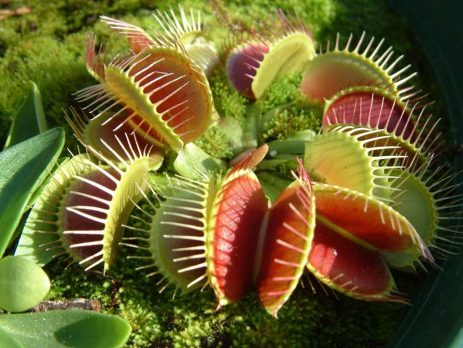
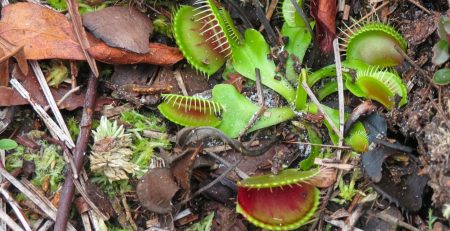
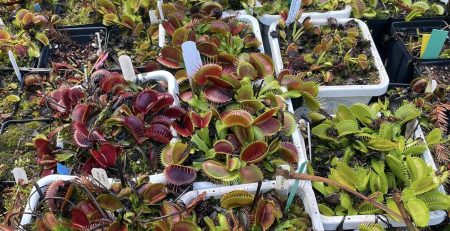

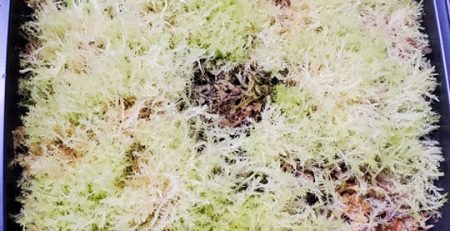
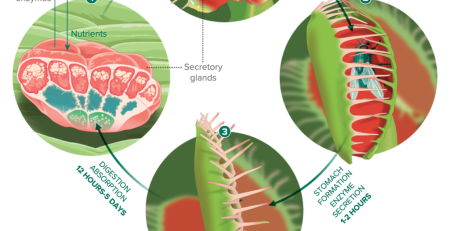
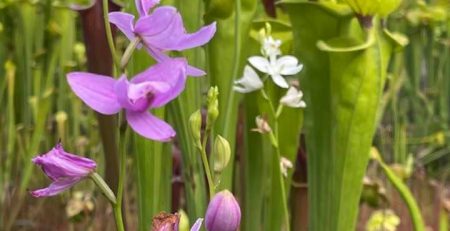
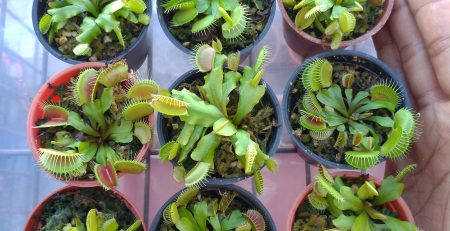
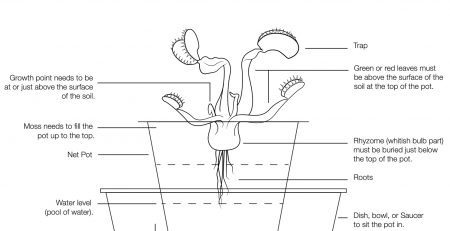
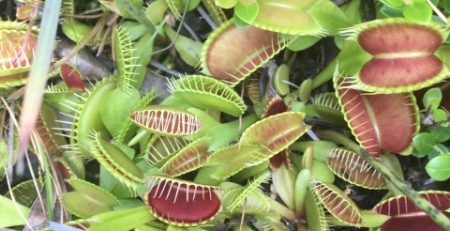
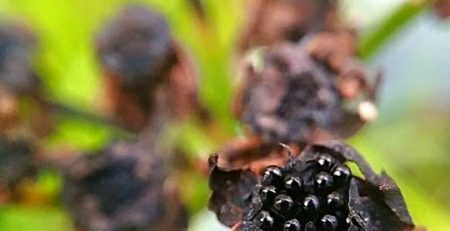
Leave a Reply
You must be logged in to post a comment.